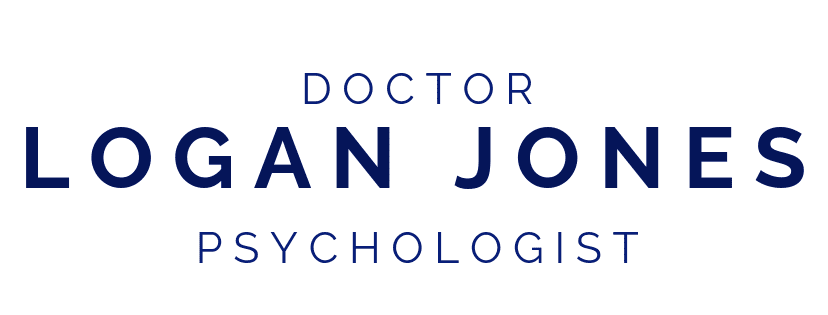How to Move Beyond Your Comfort Zone and Break the Cycle of Pain
Move Beyond Your Comfort Zone and Break the Cycle of Pain
When you were a child, you might have touched a hot stove or radiator and gotten burned. It only took that one time for you to get the message: don’t touch, or you’ll be sorry. As we get older, however, it often takes us a few more times, and a few more traumas and wounds, to learn our lessons.
Many of us find ourselves repeating the same patterns, over and over again, as if on loop. We make up to break up, we lose weight and gain it back, and we make New Year’s resolutions, only to break them a month or two down the line. Even when our actions result in familiar pains—heartbreak, health scares, crippling anxiety over the future—we somehow end up sticking with our old familiar patterns, our defaults, all the while hoping for a new outcome.
“The definition of insanity is doing the same thing over and over again, but expecting different results.” We’ve all heard these famous words, often attributed to Albert Einstein; allow me to present an alternate interpretation. Clinging to old actions, habits, and behaviors is indeed unproductive, but you’re not insane—you’re resisting.
When you hold tight to patterns that limit, damage, or endanger you, you resist the flow of life and the unfolding of the world around us..

You were meant to grow and blossom, not remain stagnant. Therefore, the best way to move forward is to surrender old habits of thinking, and to explore, create, and move into new ways of thinking and living.
Here are four tips for you consider in order to grow beyond the confines your comfort zone:
Break Your Comfort Zone, Tip #1: Set new intentions
Before you can change your life, it is vital to conjure a clear image of the life you want to build. What exactly is it that you want?—a loving romantic relationship, financial stability, a healthy work-life balance?
Getting specific on the desires and intentions for your life sends a signal to the world that you are ready to receive that which you’ve requested.
Take 10 minutes and paint a picture for yourself: Free-write a list of all the things you want for yourself; the more detailed you can make your statements, the better. Where are you living?—apartment, house? On the beach, in the country, or in the city? How many rooms? What do they look like? Who occupies those rooms? How are your relationships? What are you doing professionally? What is your calling? How do you feel when you go to bed at night knowing that all that you have wanted is coming true for you each day? Don’t be afraid to think big—part of breaking out of your limited comfort zone is imagining more for yourself. Remember, you will only ever receive what you believe is possible for your life, so aim high.
Break Your Comfort Zone, Tip #2: Take action
Once you’ve created a vivid picture of what you want, it’s time to put thoughts to action. This doesn’t necessarily mean making huge moves—you don’t have to run out and buy that house or quit your job right away. You merely push yourself to take small, intentional, single steps towards what you imagine for yourself every single day. If you want a new job, that step could be as simple as updating your resume, igniting your social network, or reaching out for informational interviews. If what you desire is a romantic relationship, you could be open to being more social, create an online dating profile, or ask a friend to keep you in mind or set you up on a date.
Taking action doesn’t mean jumping into the pool headfirst. Dip your toes into the waters of change until you’re ready to swim.
Remember, a baby step for one person might be a milestone for another. When venturing into foreign territories, don’t compare your journey to anyone else’s. Take steps that are manageable but still challenging enough to catapult you forward.
Break Your Comfort Zone, Tip #3: Hold yourself accountable
Leaving your comfort zone will be—you guessed it—uncomfortable. As you try new things, make healthier decisions, and leave restricted, familiar habits behind, you will likely feel some resistance emerge in the form of self-doubt and fear. Am I making the right decision? Can I really handle this? Am I in over my head? These questions are just the ego’s method of trying to coax you back into your comfort zone. The ego’s number one job is to keep you safe, and so it processes change and risk as dangers to be avoided. This is when you need to stand firm and honor the commitments you’ve made to yourself.
Do not allow yourself to be lulled back into the comfort of mediocrity. When things get tough, you can choose to hold yourself accountable for the promises you’ve made by remembering why you started, where you’re going, and what’s at stake.
Create an anchoring statement for yourself that will remind you why you implemented these life changes. “What life am I creating?” is a great one. Maybe you embarked on a lifestyle shift to live a longer life and be able to see your life purpose to completion. Perhaps you left that toxic relationship to find peace and rediscover your personal power as an individual. Whatever the shift that you have made, there was a valid reason behind it, and that’s what you’ve got to hold onto when things get challenging. You may also consider working with a therapist or performance coach as an extra source of support to help keep you accountable.
Break Your Comfort Zone, Tip #4: Be patient
Real mindset and behavioral changes take time to set in. Be patient with yourself as you build momentum toward your goals. If you feel yourself being tempted to fall into old patterns, don’t beat yourself up—that’s natural.
Breathe, and remind yourself of your bravery for starting something new, and letting go of something old.
In time, as you remain committed to your new course, things will become easier and begin to feel like your new second-nature. Hang in there, and don’t adhere yourself too strictly to timetables. Progress is not linear; there will be many ups, downs, and curves along your journey, but it will surely be worth it.
For many people, steps one and two come the easiest. When we’re frustrated or in pain, it’s easy to declare that things need to change and then rush to action: we quit that job, we end that relationship, we start that lifestyle change. However, without steps three and four—without holding ourselves accountable and remaining patient with the process—we’re destined to end up right back where we started.
The Universe will send you the same test in different forms, again and again, until you learn and apply the lesson it’s trying to teach you.
End the continuity of the past, interrupt the repetitive cycle that is holding you back, by breaking through your comfort zone—you can claim the life you’ve been wanting for yourself through the courage of conviction and power of practice.
DO YOU FIND YOURSELF REPEATING THE SAME STRUGGLES? WOULD YOU LIKE ASSISTANCE IN MAKING BIG LIFE CHANGES? Call Dr. Logan Jones today at 646.798.8354.
Dr. Logan Jones is a New York City-based psychologist. He works with people on the cusp of change to create lives they can get excited about. Dr. Logan uses years of clinical experience to hold clients accountable to a new and enhanced version of themselves. Call today for a complimentary consultation.
For more daily inspiration, follow Dr. Logan Jones on Instagram: @drloganjones

No matter what you’re going through, whether depression, anxiety, or PTSD, there is hope. If you are looking for therapy in NYC his psychotherapy practice is located in central Manhattan near Flatiron, West Village, NoMad Chelsea, or Union Square.


